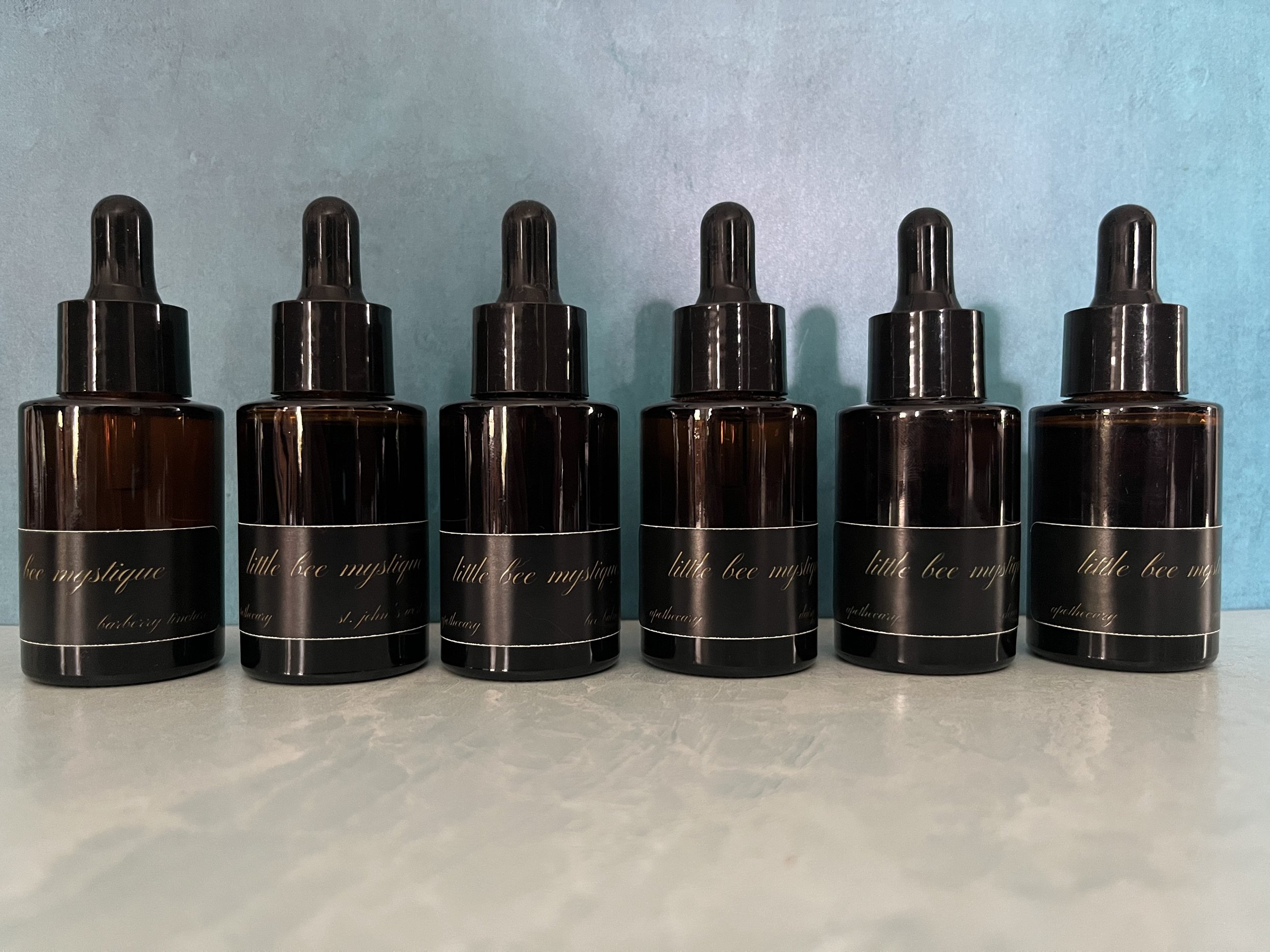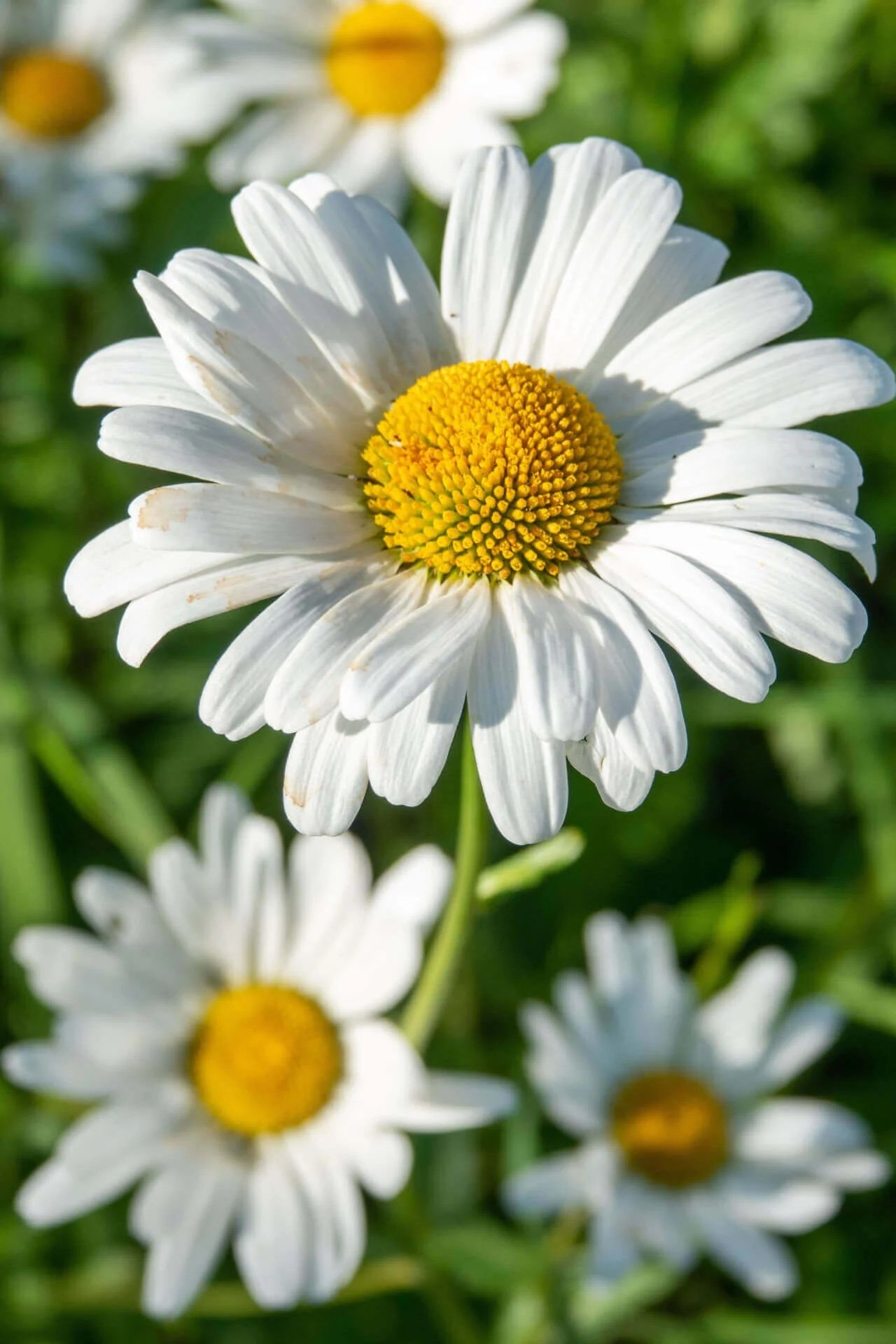Daisy Herbal Tincture
The common Daisy (Bellis perennis) is arguably one of the most useful therapeutic herbs that we have that is grossly overlooked. Ask people about the daisy and most of them will have made daisy chains but won’t know that the daisy is edible and is also a valuable herbal medicine. I too, only just learned of its medicine a few years ago.
Daisy has fallen out of use in modern herbal medicine but at one time its properties were much better known. It was used to ease aches, pains, and strains in the way that people now use arnica (arnica is a type of daisy that grows in the Alps). Common daisy was known as “Gardeners’ Friend” because it was applied to relieve the aching joints of people who had been crouched down gardening all day.
Daisy was also thought to be a wound healer and people would apply it to cuts and scrapes to help heal wounds.
A research study published in 2012 appears to confirm these properties of daisy. This study found that 100% of the wounds treated on rats with an extract of daisy healed perfectly without any scarring. The researchers concluded, “Thus, traditional usage of wound healing activity of B. perennis was scientifically verified for the first time.” Modern analysis of this plant has found that daisies contain nearly as much vitamin C as lemons!
The main action of the plant is astringent and tonic. It is used to treat a variety of complaints, ranging from circulatory to respiratory complaints, as well as the well-known uses to treat inflammation. It is also an anti-inflammatory, vasotonic alterative, antifungal, and antibacterial, as well as being anti-viral, and a cardiac tonic. The plant is also diuretic and diaphoretic as well as being antirheumatic, antispasmodic, anodyne, and vulnerary.
The humble daisy can also be used to treat respiratory ailments such as coughs and catarrh due to its expectorant properties, as well as being useful in the treatment of gastroenteritis and bronchitis internally, and can be used to treat bruises, sprains, cuts, and grazes, wounds, boils and skin disorders externally.
Planetary Influence: It is commonly agreed that the daisy is ruled primarily by Venus under the sign of Cancer and, to a lesser degree, by the Moon.
Spiritual and Energetic Uses: The consensus among most authors seems to be that Daisy is the flower of innocence, purity, and steadfast love. The daisy is the flower of innocence due to its long-standing association with children, as well as being a symbol of survival and resilience due to its ability to survive despite being regularly trodden underfoot. The flower remedy is used for clarity and concentration, to allow the user to bring together many threads of thought or research to obtain a successful conclusion. It is also used for people suffering problems associated with money, relationships, or learning skills, without understanding where the problems arise from or why.
** This herb was wild-harvested free from pesticides
** 1.5oz recyclable bottle
The common Daisy (Bellis perennis) is arguably one of the most useful therapeutic herbs that we have that is grossly overlooked. Ask people about the daisy and most of them will have made daisy chains but won’t know that the daisy is edible and is also a valuable herbal medicine. I too, only just learned of its medicine a few years ago.
Daisy has fallen out of use in modern herbal medicine but at one time its properties were much better known. It was used to ease aches, pains, and strains in the way that people now use arnica (arnica is a type of daisy that grows in the Alps). Common daisy was known as “Gardeners’ Friend” because it was applied to relieve the aching joints of people who had been crouched down gardening all day.
Daisy was also thought to be a wound healer and people would apply it to cuts and scrapes to help heal wounds.
A research study published in 2012 appears to confirm these properties of daisy. This study found that 100% of the wounds treated on rats with an extract of daisy healed perfectly without any scarring. The researchers concluded, “Thus, traditional usage of wound healing activity of B. perennis was scientifically verified for the first time.” Modern analysis of this plant has found that daisies contain nearly as much vitamin C as lemons!
The main action of the plant is astringent and tonic. It is used to treat a variety of complaints, ranging from circulatory to respiratory complaints, as well as the well-known uses to treat inflammation. It is also an anti-inflammatory, vasotonic alterative, antifungal, and antibacterial, as well as being anti-viral, and a cardiac tonic. The plant is also diuretic and diaphoretic as well as being antirheumatic, antispasmodic, anodyne, and vulnerary.
The humble daisy can also be used to treat respiratory ailments such as coughs and catarrh due to its expectorant properties, as well as being useful in the treatment of gastroenteritis and bronchitis internally, and can be used to treat bruises, sprains, cuts, and grazes, wounds, boils and skin disorders externally.
Planetary Influence: It is commonly agreed that the daisy is ruled primarily by Venus under the sign of Cancer and, to a lesser degree, by the Moon.
Spiritual and Energetic Uses: The consensus among most authors seems to be that Daisy is the flower of innocence, purity, and steadfast love. The daisy is the flower of innocence due to its long-standing association with children, as well as being a symbol of survival and resilience due to its ability to survive despite being regularly trodden underfoot. The flower remedy is used for clarity and concentration, to allow the user to bring together many threads of thought or research to obtain a successful conclusion. It is also used for people suffering problems associated with money, relationships, or learning skills, without understanding where the problems arise from or why.
** This herb was wild-harvested free from pesticides
** 1.5oz recyclable bottle
The common Daisy (Bellis perennis) is arguably one of the most useful therapeutic herbs that we have that is grossly overlooked. Ask people about the daisy and most of them will have made daisy chains but won’t know that the daisy is edible and is also a valuable herbal medicine. I too, only just learned of its medicine a few years ago.
Daisy has fallen out of use in modern herbal medicine but at one time its properties were much better known. It was used to ease aches, pains, and strains in the way that people now use arnica (arnica is a type of daisy that grows in the Alps). Common daisy was known as “Gardeners’ Friend” because it was applied to relieve the aching joints of people who had been crouched down gardening all day.
Daisy was also thought to be a wound healer and people would apply it to cuts and scrapes to help heal wounds.
A research study published in 2012 appears to confirm these properties of daisy. This study found that 100% of the wounds treated on rats with an extract of daisy healed perfectly without any scarring. The researchers concluded, “Thus, traditional usage of wound healing activity of B. perennis was scientifically verified for the first time.” Modern analysis of this plant has found that daisies contain nearly as much vitamin C as lemons!
The main action of the plant is astringent and tonic. It is used to treat a variety of complaints, ranging from circulatory to respiratory complaints, as well as the well-known uses to treat inflammation. It is also an anti-inflammatory, vasotonic alterative, antifungal, and antibacterial, as well as being anti-viral, and a cardiac tonic. The plant is also diuretic and diaphoretic as well as being antirheumatic, antispasmodic, anodyne, and vulnerary.
The humble daisy can also be used to treat respiratory ailments such as coughs and catarrh due to its expectorant properties, as well as being useful in the treatment of gastroenteritis and bronchitis internally, and can be used to treat bruises, sprains, cuts, and grazes, wounds, boils and skin disorders externally.
Planetary Influence: It is commonly agreed that the daisy is ruled primarily by Venus under the sign of Cancer and, to a lesser degree, by the Moon.
Spiritual and Energetic Uses: The consensus among most authors seems to be that Daisy is the flower of innocence, purity, and steadfast love. The daisy is the flower of innocence due to its long-standing association with children, as well as being a symbol of survival and resilience due to its ability to survive despite being regularly trodden underfoot. The flower remedy is used for clarity and concentration, to allow the user to bring together many threads of thought or research to obtain a successful conclusion. It is also used for people suffering problems associated with money, relationships, or learning skills, without understanding where the problems arise from or why.
** This herb was wild-harvested free from pesticides
** 1.5oz recyclable bottle
Disclaimer: Herbal tinctures are intended for supplemental use only and are not meant to treat, cure, or prevent any disease or illness. The Food and Drug Administration has not evaluated these statements. Before using any herbal tinctures, it is important to consult with a healthcare professional, especially if you are pregnant, nursing, taking any medications, or have any pre-existing medical conditions. Herbal tinctures may interact with certain medications, and some individuals may experience allergic reactions. Always follow the recommended dosage and do not exceed the recommended amount. The seller of these products is not responsible for any adverse reactions or effects that may result from the use of herbal tinctures. Use at your own risk.


